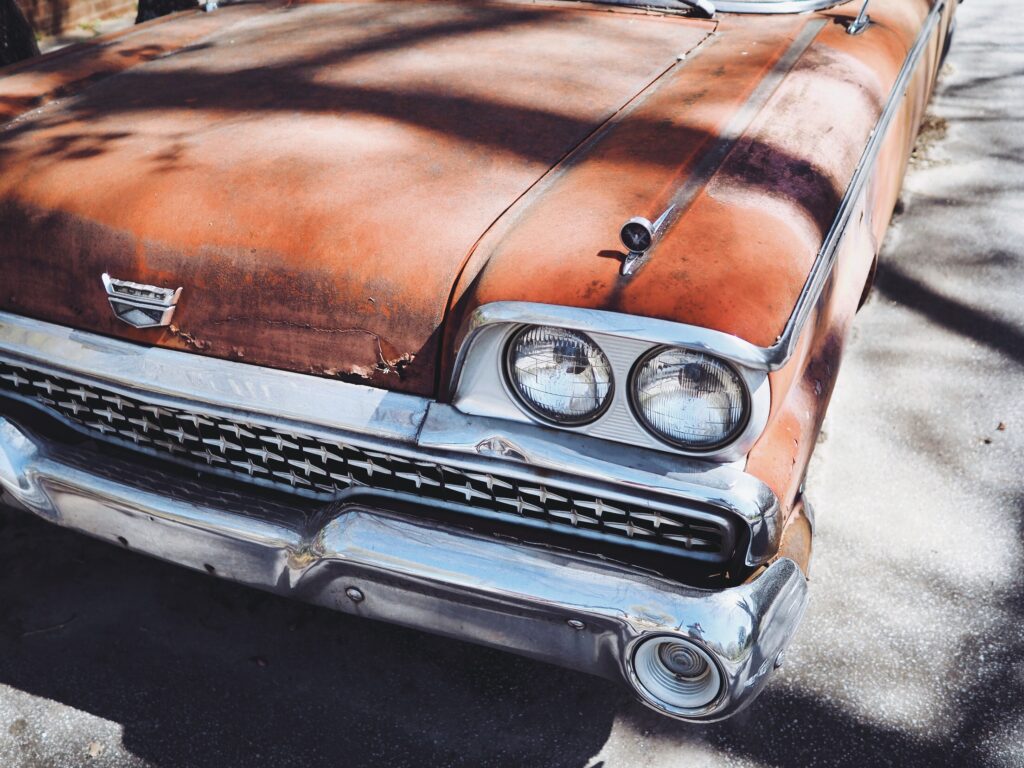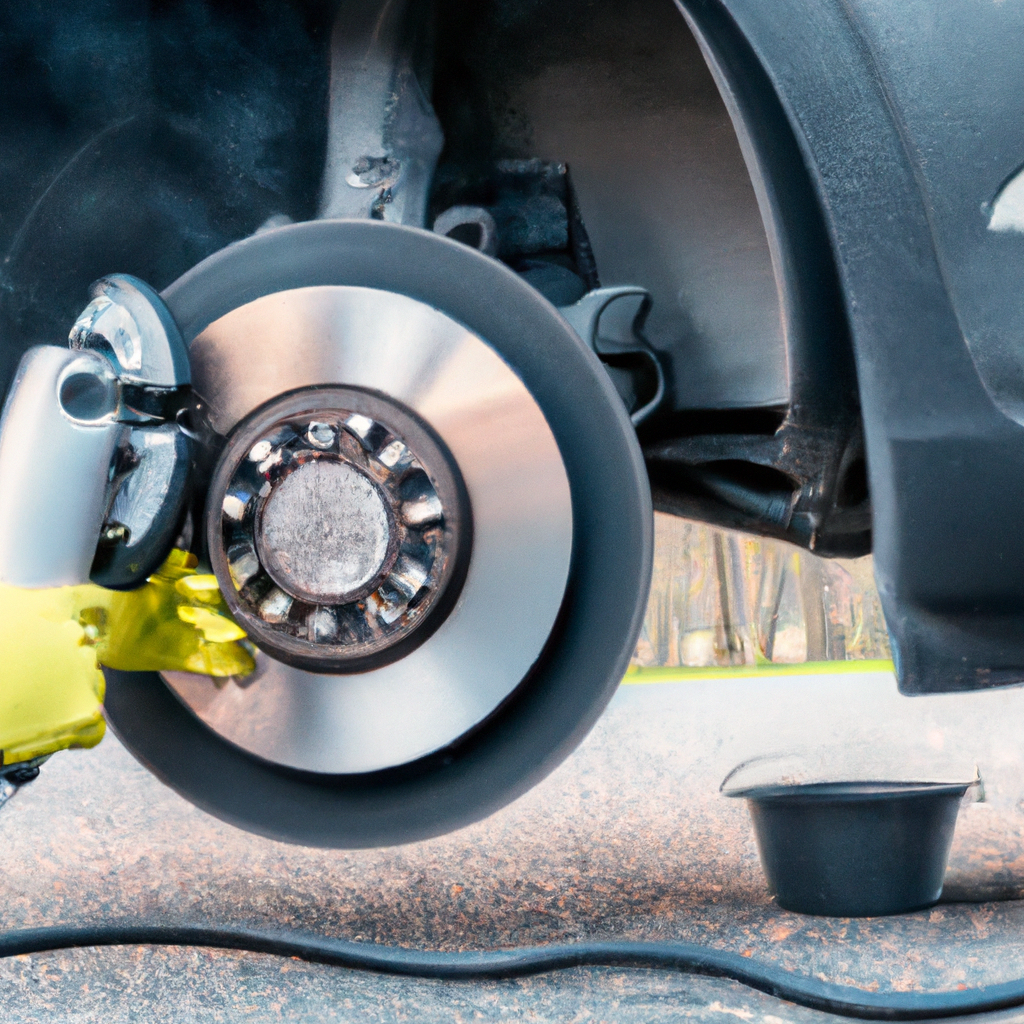Have you ever wondered how to effectively clean brake dust from your wheels? If so, you’re in luck! In this article, we will share some helpful tips and tricks to help you get those wheels sparkling again. Say goodbye to unsightly brake dust and hello to gleaming, pristine wheels in no time. Whether you’re a car enthusiast or just someone who wants to keep their vehicle looking its best, these simple cleaning methods are sure to impress. So, let’s get started and learn how to tackle brake dust buildup like a pro!
Choosing the Right Cleaning Products and Tools
When it comes to cleaning your wheels and removing brake dust, it’s important to choose the right cleaning products and tools. Not all wheel cleaners are created equal, and using the wrong ones can potentially damage your wheels or not effectively remove the brake dust.
Evaluate the Type of Brake Dust
Before selecting a wheel cleaner, it’s essential to evaluate the type of brake dust you are dealing with. Brake dust can vary in severity depending on factors such as the type of brake pads used on your vehicle and your driving habits.
If you notice a light, grayish dust on your wheels, it is likely iron brake dust. On the other hand, heavy and dark brake dust can indicate a combination of iron, carbon, and other materials.
Select a Wheel Cleaner Suitable for Your Wheels
Once you have determined the type of brake dust, it’s time to select a wheel cleaner that is suitable for your wheels. Different wheel materials require different types of cleaners to ensure they are effectively cleaned without causing any damage.
For example, if you have aluminum or chrome wheels, you’ll want to use a non-acidic wheel cleaner to prevent any corrosion or discoloration. On the other hand, if you have painted wheels, you can use a slightly more aggressive cleaner to tackle stubborn brake dust.
When choosing a wheel cleaner, be sure to read the instructions and any warnings on the product packaging to ensure it is safe for use on your specific wheels.
Gather the Necessary Tools
In addition to a suitable wheel cleaner, you’ll also need a few tools to help you in the cleaning process. Here are some essential tools you should gather before getting started:
-
Soft Brush or Sponge: This will help you loosen any dust and debris from the wheels without scratching them. Make sure it’s soft enough to be gentle on your wheels but firm enough to remove the brake dust effectively.
-
Bucket of Soapy Water: Before applying the wheel cleaner, it’s a good idea to give your wheels a preliminary wash with soapy water to remove any loose dirt or grime.
-
Wheel Brush: A wheel brush is specifically designed to get into those hard-to-reach areas of your wheels and remove stubborn brake dust. Look for one with soft bristles that won’t scratch the surface of your wheels.
-
Microfiber Cloth: To dry off your wheels after rinsing them, use a microfiber cloth. Microfiber is gentle on your wheels and won’t leave behind any lint or scratches.
Now that you have everything you need, it’s time to prepare your wheels for cleaning.
Preparing Your Wheels for Cleaning
Before diving into cleaning your wheels, there are a few necessary steps to ensure you get the best results.
Park Your Vehicle on a Flat, Stable Surface
To make the cleaning process easier and safer, it’s crucial to park your vehicle on a flat and stable surface. This will provide stability and prevent any accidental rolling or movement while you are cleaning the wheels.
Allow the Wheels to Cool Down
It’s important to let your wheels cool down before starting the cleaning process. If you clean hot wheels, the cleaning products can evaporate faster, making them less effective. Additionally, hot wheels can be more difficult to handle safely, as you may risk burning yourself.
Remove the Wheel Covers or Hubcaps
If your vehicle has wheel covers or hubcaps, it’s best to remove them before cleaning the wheels. This will allow you to clean the entire surface of the wheel thoroughly and reach all the nooks and crannies where brake dust may accumulate.
Prepare a Bucket of Soapy Water
Before applying any wheel cleaner, it’s a good idea to give your wheels a preliminary wash with a bucket of soapy water. This will help remove any loose dirt or grime and make the cleaning process more effective. Use a mild automotive soap and a soft sponge or brush to gently remove any surface contaminants.
Now that your wheels are ready, it’s time to move on to removing the loose dust and debris.

Removing the Loose Dust and Debris
Before applying any wheel cleaner, it’s important to remove any loose dust and debris from the surface of your wheels. This will help ensure that the wheel cleaner can penetrate and effectively dissolve the brake dust.
Start by Rinsing the Wheels
Begin by thoroughly rinsing the wheels with water. You can use a garden hose or a pressure washer to remove any loose dirt or grime. Make sure to aim the water at all angles to ensure a thorough rinse.
Use a Soft Brush or Sponge to Loosen Dust
After rinsing, take your soft brush or sponge and gently scrub the wheels, working in circular motions. This will help loosen any stubborn brake dust that may be stuck on the surface. Be gentle to avoid scratching the wheels, especially if you have painted or polished wheels.
Rinse Again to Remove Loose Debris
Once you have scrubbed the wheels, rinse them again with water to remove the loosened dust and debris. This will ensure a clean surface and prepare the wheels for the application of the wheel cleaner.
Now that the loose dust and debris are removed, it’s time to tackle the brake dust itself.
Scrubbing and Cleaning the Brake Dust
To effectively remove brake dust from your wheels, you’ll need to use a wheel cleaner and a wheel brush. Here’s how to go about it:
Apply the Wheel Cleaner to the Wheels
Start by applying the wheel cleaner to the surface of the wheels. Be sure to follow the instructions on the product packaging for the correct application method. Apply the cleaner evenly, covering all areas where brake dust is present.
Scrub the Wheels with a Wheel Brush
Using your wheel brush, scrub the wheels thoroughly. Pay special attention to areas with heavy brake dust buildup, such as the inner wheel wells or around the lug nuts. Use gentle pressure and circular motions to agitate the brake dust and help the cleaner work effectively.
Pay Special Attention to Hard-to-Reach Areas
While scrubbing the wheels, make sure to pay extra attention to hard-to-reach areas. These include between the spokes, behind the brake calipers, and around any intricate designs on the wheels. Utilize the bristles of the brush to get into these areas and remove any trapped brake dust.
Once you have thoroughly scrubbed the wheels, it’s time to rinse them off and dry them.

Rinsing and Drying the Wheels
Rinsing and drying your wheels properly is crucial to prevent water spots or residue from remaining on the surface. Follow these steps to ensure your wheels are left clean and dry:
Thoroughly Rinse the Wheels with Water
Using a hose or pressure washer, thoroughly rinse the wheels to remove any remaining wheel cleaner and brake dust residue. Make sure to rinse from all angles and get into the hard-to-reach areas to ensure a complete clean.
Dry the Wheels Using a Microfiber Cloth
After rinsing, use a clean microfiber cloth to dry the wheels. Wipe the surface of each wheel gently to remove any water droplets or remaining residue. Microfiber is ideal for this task as it is absorbent and won’t leave behind any lint or scratches.
Check for Any Remaining Brake Dust
Once the wheels are dry, inspect them closely to ensure that all the brake dust has been adequately removed. If you notice any remaining dust or stains, you may need to repeat the cleaning process or use a more aggressive wheel cleaner to tackle the stubborn areas.
With clean and dry wheels, you can now consider applying a wheel sealant or wax for added protection.
Applying a Wheel Sealant or Wax
Applying a wheel sealant or wax can provide an additional layer of protection, making it easier to clean your wheels in the future. Here’s how to go about it:
Choose a Wheel Sealant or Wax
There are numerous wheel sealants and waxes available in the market. Look for a product specifically designed for wheels, as they offer superior protection against brake dust, road grime, and UV damage. Read the product instructions carefully to ensure it is suitable for your wheel material.
Apply a Thin Coat to the Wheels
Using a clean applicator pad or cloth, apply a thin coat of the wheel sealant or wax to each wheel. Make sure to cover the entire surface evenly, including the spokes and intricate details. Follow the product instructions for the recommended drying time before moving on to the next step.
Allow the Sealant or Wax to Dry and Cure
After applying the sealant or wax, allow it to dry and cure according to the manufacturer’s instructions. This could range from a few minutes to several hours, depending on the product. Avoid driving or getting the wheels wet during this drying period to ensure the best results.
Once the sealant or wax has properly cured, it’s time to give your wheels their finishing touch.

Replacing the Wheel Covers or Hubcaps
If you removed the wheel covers or hubcaps during the cleaning process, it’s now time to clean and reinstall them. Here’s what you need to do:
Clean and Dry the Wheel Covers or Hubcaps
Before reinstalling the wheel covers or hubcaps, give them a thorough cleaning and drying. Use a mild soap and water solution and a soft cloth or sponge to remove any dirt or grime. Make sure they are completely dry to prevent water spots or streaks.
Reinstall the Wheel Covers or Hubcaps
Once the wheel covers or hubcaps are clean and dry, carefully place them back onto the wheels. Ensure they are properly aligned and securely fastened to prevent any accidents while driving. Taking the time to reinstall them correctly will help maintain the overall appearance of your wheels.
Regular Maintenance and Preventive Tips
Now that your wheels are clean and protected, it’s essential to follow some regular maintenance and preventive tips to keep them looking their best. Here are a few suggestions:
Regularly Clean Your Wheels to Prevent Build-up
Make it a habit to clean your wheels regularly to prevent brake dust and other contaminants from building up. A quick wash with soapy water and a soft brush every few weeks will help maintain their cleanliness and prevent the need for more intensive cleaning in the future.
Consider Using Ceramic Coatings for Added Protection
If you want to take your wheel protection to the next level, consider applying a ceramic coating specifically designed for wheels. Ceramic coatings provide long-lasting protection against brake dust, dirt, and UV damage. They create a hydrophobic barrier that makes cleaning your wheels a breeze.
Avoid Harsh Chemicals and Abrasive Cleaning Tools
When cleaning your wheels, be cautious of using harsh chemicals or abrasive cleaning tools. These can potentially damage the wheel finish, leading to discoloration or scratches. Stick to products specifically designed for wheels and use gentle cleaning tools, such as soft brushes and microfiber cloths, to ensure your wheels stay in pristine condition.

Seek Professional Help if Needed
If you are unsure about the cleaning process, lack the time, or feel uncomfortable handling the task yourself, it’s always best to seek professional help. Auto detailing shops or professional wheel cleaning services have the expertise and the right tools to clean your wheels safely and effectively. They can also provide additional treatments, such as polishing or buffing, to restore the shine and appearance of your wheels.
In conclusion, cleaning brake dust from your wheels is a necessary task to maintain their appearance and prevent damage. By following the steps outlined in this article, evaluating the type of brake dust, choosing the right cleaning products and tools, and taking the necessary precautions, you can ensure that your wheels remain clean and protected. Regular maintenance and preventive care will go a long way in keeping your wheels looking their best. So roll up your sleeves, put on some protective gloves, and give your wheels the attention they deserve. Your vehicle will thank you with a sparkling shine!

